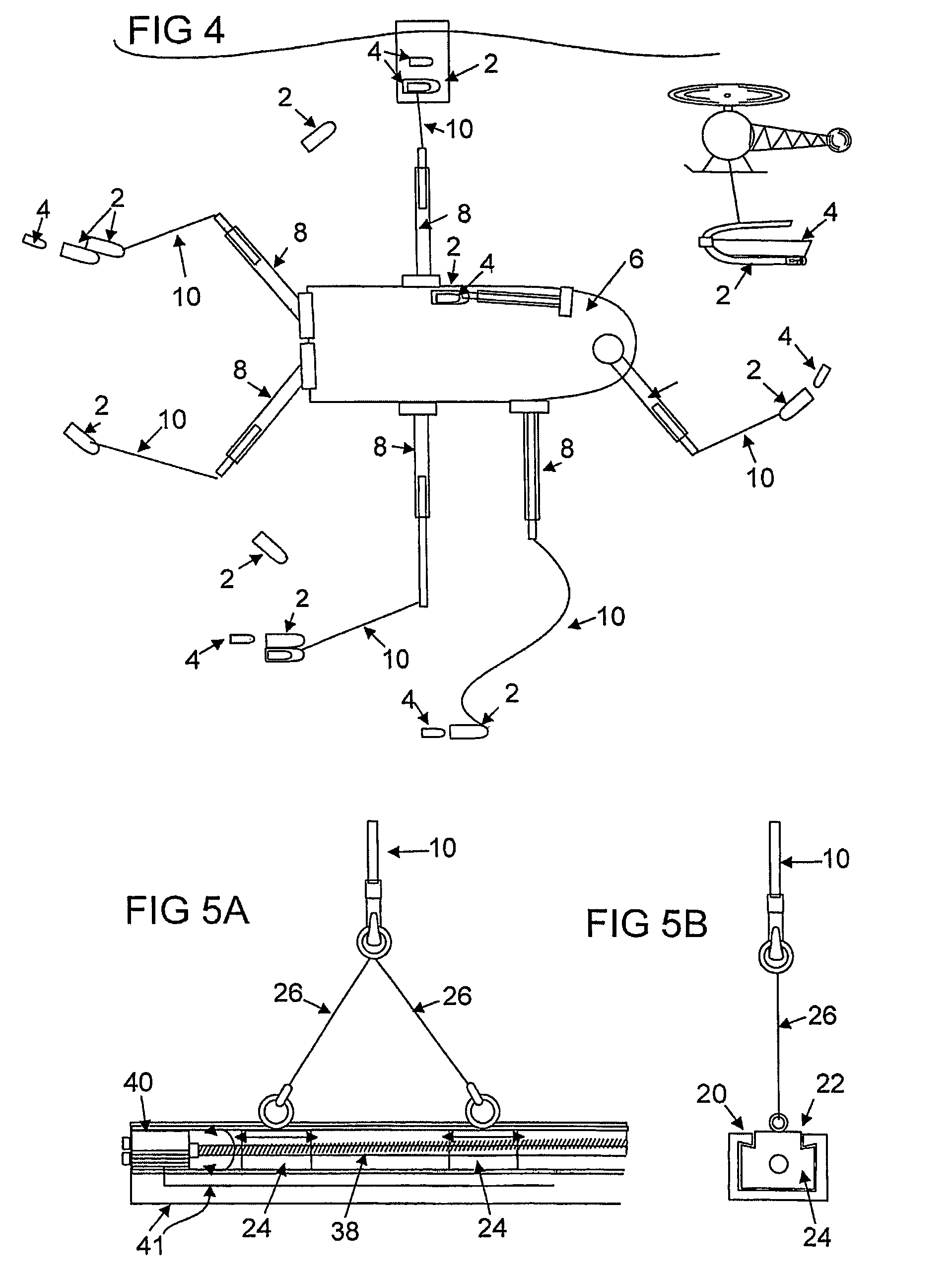Marine payload handling craft and system
a payload handling and payload technology, applied in the field of payload delivery, can solve the problems of reducing the geometric and rapid insignificance of explosive forces and the damage caused by them, no safe, cost-efficient craft and system, and unable to meet the needs of passengers, etc., and achieve the effect of increasing the number of environments
- Summary
- Abstract
- Description
- Claims
- Application Information
AI Technical Summary
Benefits of technology
Problems solved by technology
Method used
Image
Examples
Embodiment Construction
[0033]FIG. 1 is a side view showing the manner in which an auxiliary vessel can be mated or unmated from a marine handling craft, which is in turn attached to a mother ship via a tether or umbilical.
[0034]FIG. 2 is a front view of the marine handling craft of FIG. 1, with a docked auxiliary vehicle shown in phantom.
[0035]FIG. 3 is a plan view of the marine handling craft shown in FIGS. 1 and 2, with the docked auxiliary vehicle mated and docked with the marine handling craft.
[0036]FIG. 4 is a plan view schematic showing how the marine handling craft shown in FIGS. 1-3 can be employed with individual cranes or booms located at various positions on a mother ship or attached to a helicopter.
[0037]FIG. 5A is a side view of a mechanism for advancing traveling fastener blocks that are employed on the marine handling track for adjusting the position of the tether extending between the mother ship and the marine handling craft. FIG. 5B is an end view of this same mechanism.
[0038]FIGS. 6A an...
PUM
 Login to View More
Login to View More Abstract
Description
Claims
Application Information
 Login to View More
Login to View More - R&D
- Intellectual Property
- Life Sciences
- Materials
- Tech Scout
- Unparalleled Data Quality
- Higher Quality Content
- 60% Fewer Hallucinations
Browse by: Latest US Patents, China's latest patents, Technical Efficacy Thesaurus, Application Domain, Technology Topic, Popular Technical Reports.
© 2025 PatSnap. All rights reserved.Legal|Privacy policy|Modern Slavery Act Transparency Statement|Sitemap|About US| Contact US: help@patsnap.com



